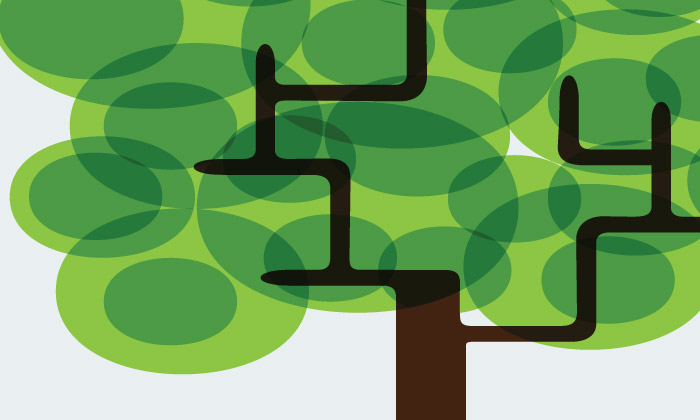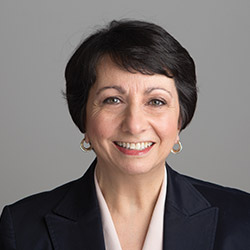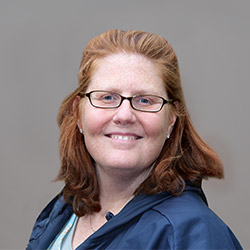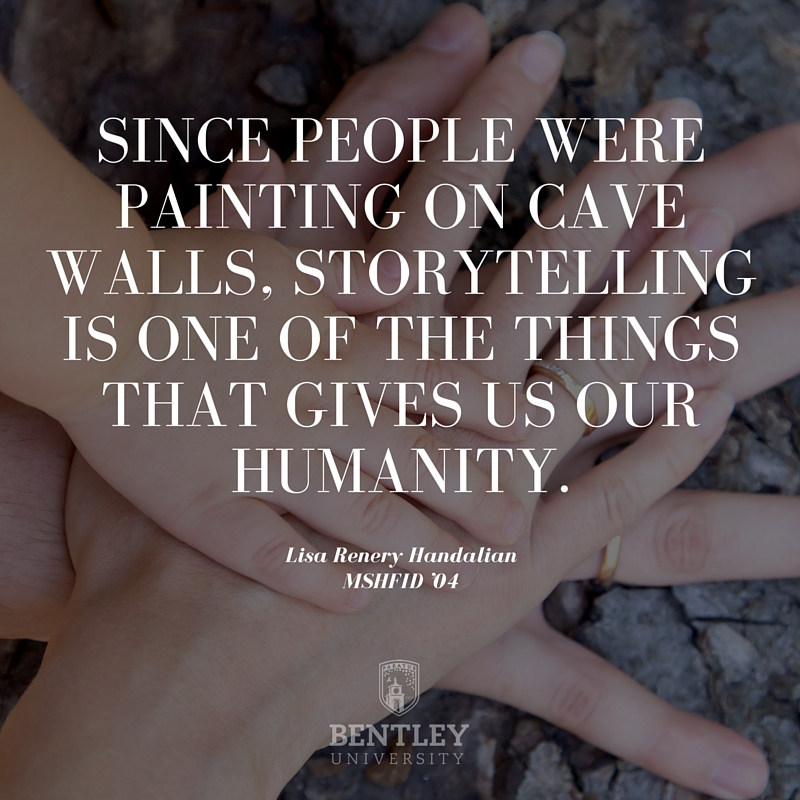
 Before genealogy became a billion-dollar industry, before family tree websites counted membership in the tens of millions, and before Time magazine cheekily dubbed the hobby — on the Internet, at least — “almost as popular as porn,” Margaret Fortier, MSHFID ’02 (right) was researching family ancestors and, in the process, charting a new career.
Before genealogy became a billion-dollar industry, before family tree websites counted membership in the tens of millions, and before Time magazine cheekily dubbed the hobby — on the Internet, at least — “almost as popular as porn,” Margaret Fortier, MSHFID ’02 (right) was researching family ancestors and, in the process, charting a new career.
“I really liked that it was so multidisciplinary,” she says of her first project: following her husband’s French Canadian side back to France. “With genealogy, you really have to understand history, anthropology, culture, linguistics — a lot of different things that come together to make a story.” Lisa Renery Handalian, MSHFID ’04 (left) feels a similar kinship with the field. The San Francisco-based alumna has traced her own roots back to England and Italy, while applying her professional skills on behalf of Ancestry.com, the world’s largest genealogy website.
Lisa Renery Handalian, MSHFID ’04 (left) feels a similar kinship with the field. The San Francisco-based alumna has traced her own roots back to England and Italy, while applying her professional skills on behalf of Ancestry.com, the world’s largest genealogy website.
“I became very personally involved with the product, which was part of my job,” says Handalian, who has since left the post of senior user researcher. “I’ve unlocked a bunch of secrets, or mysteries, about my family. Over the past couple of years it has led to me getting absolutely hooked.”
Call in the Pros
Fortier, who lives in Medford, Mass., earned a certificate in genealogical research at Boston University in 2012 and since then has been working as a full-time freelance genealogist. Some clients are adoptees, some merely curious, and others have their own particular reasons for hiring a professional genealogist.
“Most are in their 30s and 40s,” notes Fortier, who had expected to serve mostly retirees. “One was an author writing a book about a famous psychic, and he was trying to see if she was related to another famous family of the same name.”
Another client needed documentation of Italian ancestry to apply for dual citizenship. His great-grandfather had married three times, and the Italian consulate requires records of all the marriages. “They don’t care that you’re only descended from one,” she says. “For this client I’ve pulled records from Montreal, Nevada, Wisconsin, New York, California . . . just everywhere!”
There is an increasing call for the skills that Fortier and fellow members of the Association of Professional Genealogists provide. The trade organization has grown from 19 to 2,800 members since its founding in 1979.
Genealogy is rapidly growing in popularity, creating an increasing demand for experts in the field.
TWEET THISImmediate Gratification
Along a parallel track, corporations have sprung up to serve the burgeoning ranks of do-it-yourselfers. Ancestry.com was founded as a print publishing business in 1983 and went online in 1996. In the past few years it has more than doubled in size, reporting $620 million in revenue in 2014, up from $225 million in 2009. Much of the increase traces to the latest trend in genealogy: genetic testing.
“The genetic component is busting things open,” observes Handalian. The company’s AncestryDNA service matches your DNA results with those of others who have taken the test.
“Ancestry technology ties you with the people in their tree whom you might not have known about. Lots of people build out whole sides of their family that way … very exciting and gratifying.”
That makes genealogy more compelling for the millennial generation, Handalian says. Younger people are drawn to the idea that a saliva sample can shed light on ethnic backgrounds, turn up long-lost relatives, and even warn about hereditary health concerns. In fact, Handalian served on the development team for AncestryHealth, which provides the platform for users to compile medical information from the family tree they create through Ancestry.com.
Smartphones with cameras and GPS capability have made genealogy portable, Handalian adds.
“People take a picture of gravestones — which are incredible sources of information — and then upload it on the spot and attach it to a person in the database.”
Telling Tales
Whatever the impact of technology, Fortier and Handalian cite a basic element at the heart of any quest for one’s roots.
“Storytelling,” says Handalian. “Since people were painting on cave walls, storytelling is one of the things that gives us our humanity.”
that gives us our humanity.”
It was “uncovering stories and following them back” that drew Fortier to genealogy. Plot twists are common. “Sometimes you have to do a lot of analysis to get an answer. Looking for someone’s parents or whether someone served in a war, there’s often no one piece of paper that says, ‘This is it.’ It can be very indirect and you have to put it all together.”
The lesson hit home for Handalian in locating her paternal grandfather, Luigi, an Italian immigrant to England who died when Handalian’s own father was a boy.
“My dad didn’t have any pictures. I went digging for information, and it was a series of clues, one step after the other, that led me to bigger and bigger discoveries and contexts. I was able to get a picture of Luigi, and I saw the joy in my dad’s face — he just couldn’t believe there was a picture of his dad!”
When Handalian’s father died in 2015, she left Ancestry and made a pilgrimage to his native England and her grandparents’ Italy. “I had already planned a trip to Italy to do some genealogy research,” she says. “When my dad died, it made it really poignant for me to go…to figure out the story.”
Genealogy experts share 4 tips for tracing your family tree #bentleyu #genealogy
TWEET THIS4 Tips for Tracing Your Roots
- Start With a Free Database
Margaret Fortier recommends FamilySearch.org, a website sponsored by the Mormon Church (but which offers secular information). “In addition to many, many records, it has excellent how-to articles,” she says. “It’s a great place to get the lay of the land and figure out what’s where.” There is also a library edition of Ancestry.com, available for free at most libraries.
- Mine What You Already Know
“For me, that’s number one,” says Lisa Handalian. Family stories, letters or a suitcase full of documents from a deceased relative can be a good foundation for genealogical research.
- Keep Materials in Order
A family tree expands geometrically — four grandparents lead to eight great-grandparents and 16 greatgreat-grandparents. Things can quickly get out hand, says Handalian. “Naming conventions are really important for your electronic records. I’d suggest ‘last name/first name/birth date’ for file names. This is the best way to inventory and track your documents on your own computer. Even if you’re using an online database, it is critical to have a local backup at all times.”
- Don’t Believe Everything You Read
“Just because it’s written in an official document does not mean it is true,” Fortier says. Aside from typographical errors, people have been known to lie about their age on marriage licenses, change their name upon emigrating, and misrepresent their country of origin to avoid persecution. Inconsistent spelling is another problem. “I have cases where, in the same record, a father spells his name one way and his son spells it another,” Fortier says. “If you’re focused on ‘This is the name, and it can’t be anything else,’ you will miss a lot.”
Amy Crawford is a journalist whose writing credits include The Boston Globe, Boston magazine and The Smithsonian, among others.

